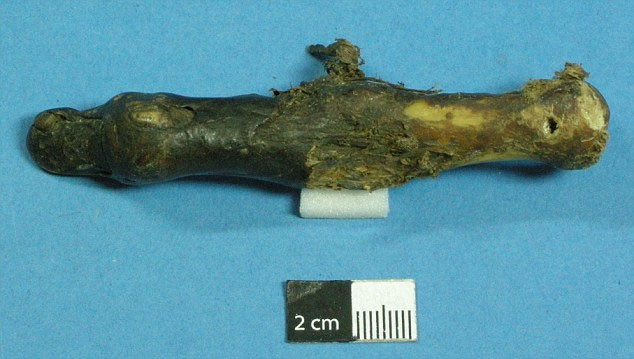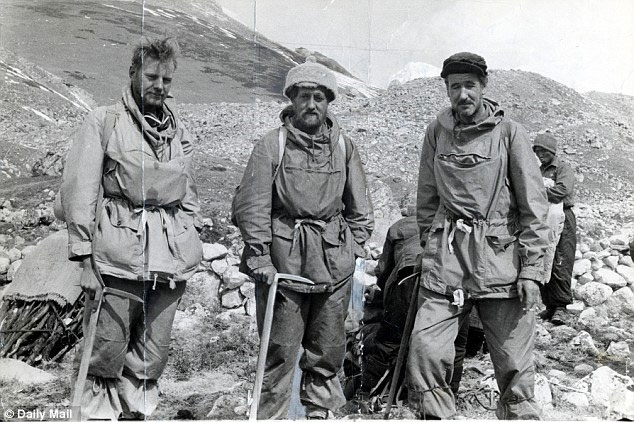The truth about 'Yeti finger'?
A wrinkled hand about the size of an adult's hand with long, fat fingers has been displayed at Pangboche Monastery (Nepal) for many years. It is not worth mentioning if people do not have the opportunity to admire the collection of human bones and primates at the Royal London College of Surgery. There was a dry finger labeled 'Yeti Finger from the hand at Pangboche' that was found in the Hunterian Museum cellar.
>>>Find the shelter of Yetis Snowman in Russia
What is the story behind this finger, how is it in London, where is the rest of the 'Pangboche hand' and where does it belong to the legendary Yeti that many people ask at the time.

Is this finger part of the Snowman?
Legend has it that the Yeti, also known as the Abominable Snowman , is a giant creature living in the Himalayas of Nepal and Tibet. Here, the story of Yeti has been handed down for generations.
The scientific community has repeatedly stated: they are simply an extinct giant ape and the Yeti is only in legend.
However, in the 1830s, the statement of the British Orientalist BHHodgson of a tall, two-legged, black-haired creature he saw while climbing in Nepal raised the debate about survival. at Meh-teh (or Yeti).
The frequency of reporting on the discovery of strange creatures increased in the early years of the 20th century.
In 1925, photographer NA Tombazi and a survey team from the Royal Geographic Society said they saw a creature near Zemu, India. NA Tombazi writes: 'There is no doubt that their shape is like a man, his posture goes straight'.

In 1954, the expedition consisted of scientists and climbers, with the support of 200 Sherpa people (people living at the foot of the Himalayas), scouring suspicious spots in this mountain range for a month. There, they find a specimen of dark brown and dark hair that is believed to be part of Yeti's scalp.

In 1958, receiving funding from a wealthy American businessman Tom Slick, Irish-American explorer Peter Byrne had information about the ancient Yeti hand at Pangboche monastery.
Byrne's desire to bring them to London was rejected by the monks because if they left it, the monastery would face a terrible curse.
Some time later, Byrne returned to the monastery. And even though the group of monks was reluctant, they eventually agreed to let Byrne take a £ 100 finger along with a request to keep it a secret.
Back in London, the finger was inspected by Professor Osman Hill. The results show that this creature is not human.
No one knows why, after all trying to get that finger, it was handed over to the Hunterian Museum and forgotten.
Over the years, only recently, the mysteries surrounding this strange object have been overturned. Accordingly, the scientific team will quickly conduct DNA tests to determine which organism it belongs to exactly? And from now until then, Yeti's existence is still a hypothesis.
- Search Bigfoot
- The truth about 'giant finger' on Mars
- Indian troops claim to have found evidence of mysterious snowmen
- The ring finger reveals the richness of men
- Finger shape speaks up your personality
- How quickly is poison in finger leaves killing people?
- The reason why controlling the ring finger always makes us tired
- New revelations about the
- Spring finger is what disease?
- Latest discovery of the mysterious Yeti Snowman
- Learn symptoms and how to treat broken fingers
- Finger reveals risk of prostate cancer?
 The truth about the mysterious red-haired giant at Lovelock Cave
The truth about the mysterious red-haired giant at Lovelock Cave Inunaki Tunnel: The haunted road leading into Japan's 'village of death'
Inunaki Tunnel: The haunted road leading into Japan's 'village of death' The mystery of the phenomenon of human reflection before dying
The mystery of the phenomenon of human reflection before dying 6 mysterious phenomena, although science has been developed for a long time, still cannot be answered
6 mysterious phenomena, although science has been developed for a long time, still cannot be answered